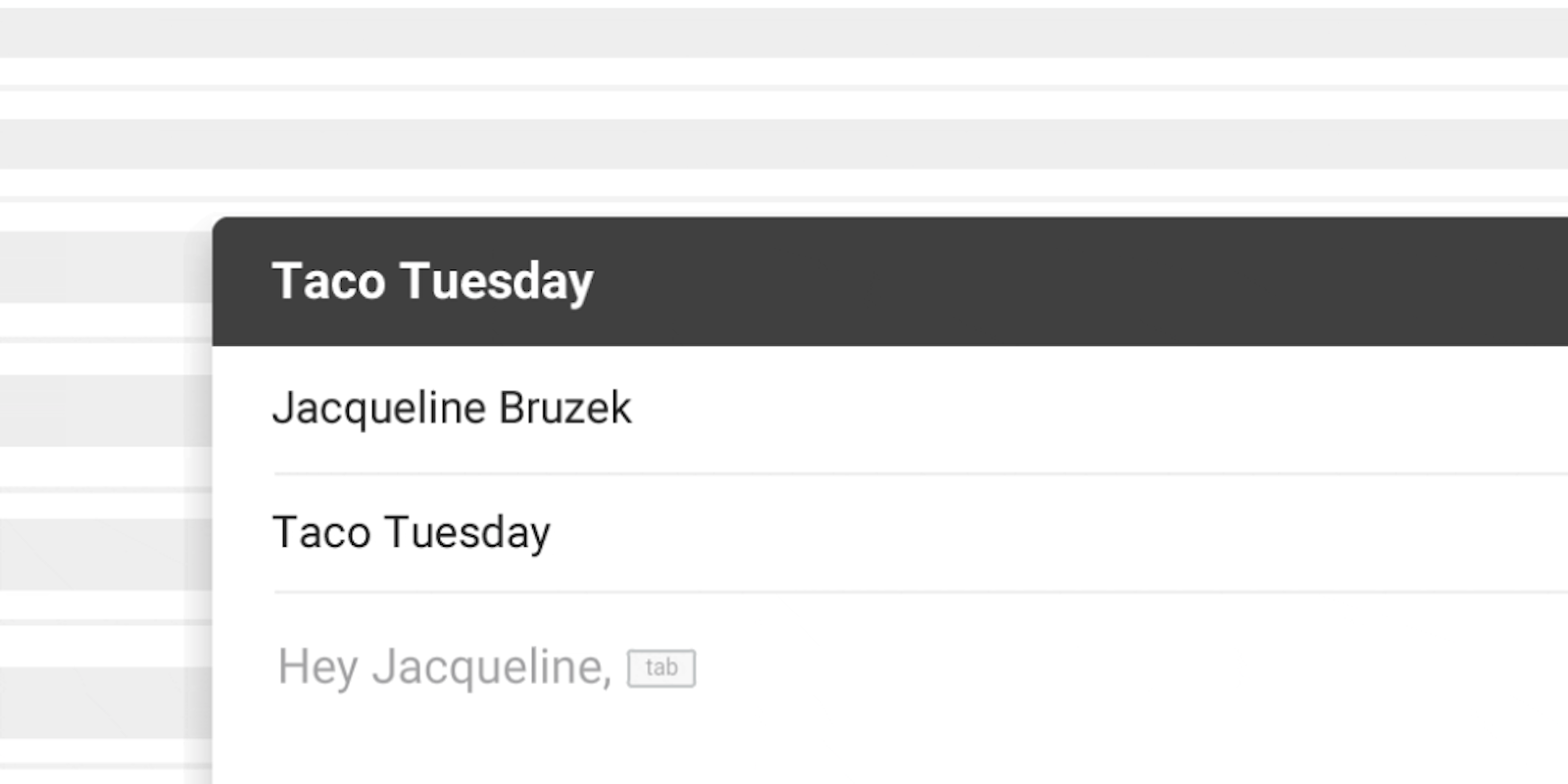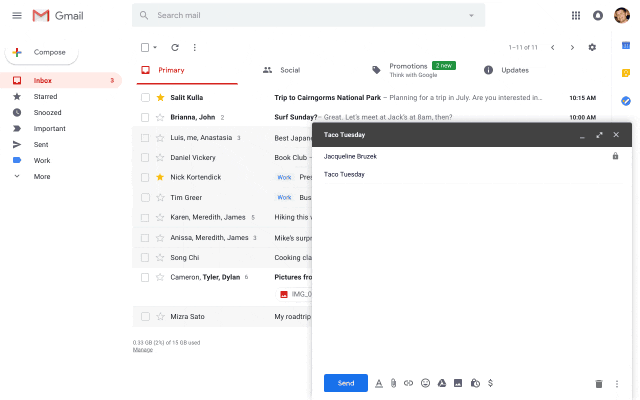If we had a dollar for every minute we spent writing emails, we’d be regularly high rolling in Las Vegas. Alas, reading, writing, and rewriting emails are just a time-consuming part of modern life. But at the I/O conference Tuesday, Google introduced a new tool that could help save you time and stress: Smart Compose.
Smart Compose is a new Gmail feature that helps you write emails from scratch more quickly. Smart Compose builds on a feature Gmail introduced last year called Smart Reply, which is designed to speed up response time when you’re replying to messages. Smart Reply was pretty simple: When you’re drafting an email reply, it understands the context of the previous message and auto-suggests three quick responses you can tap at the bottom of the screen. (Google also recently brought this feature to the web, too.)
Smart Compose is more like the predictive text on your smartphone. Powered by artificial intelligence, it works in the background and suggests full sentences as you type. If you like what it suggests, all you have to do is hit the tab button to autofill the rest of that sentence and start your next one.
This feature should help save you time by minimizing how long you spend tapping on keys and eliminating repetitive writing you do on a regular basis. It should minimize the possibility of grammatical or spelling mistakes. It’s also designed to bring up contextual information, hopefully saving time you’d normally spend copy and pasting things.
A Google spokesperson told the Daily Dot that Smart Compose is “trained on billions of common phrases and sentences.” For example, if you’re writing an email on a Friday, it may suggest “Have a great weekend!” to end your message.
“Smart Compose won’t yet learn from your personal style, but it will incorporate the context of the email subject and the previous email body (if the user is replying to an incoming email) to make better suggestions,” the spokesperson said.
Smart Compose will begin rolling out to consumer Gmail users in the coming weeks and to professional G Suite users in the next few months. To ensure you’re eligible to try out this new capability, head into your settings and make sure “Try the new Gmail” is enabled. Next, enable “experimental access.” From there, you should see Smart Compose auto-populate your messages in the not-too-distant future.



